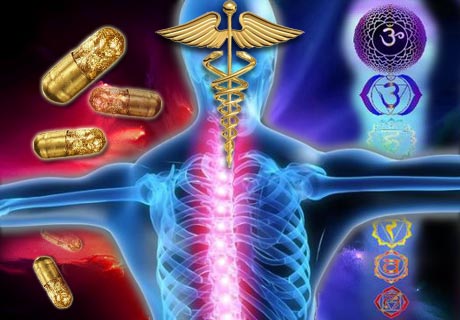Placebo Effect's Neural Activity Photographed for First Time
Source: newscientist.com

The placebo effect is not only real; its ability to deaden pain has been pinpointed to cells in the spinal cord. That raises hopes for new ways of treating conditions such as chronic pain.
The researchers who made the discovery scanned the spinal cords of volunteers while applying painful heat to one arm. Then they rubbed a cream onto the arm and told the volunteers that it contained a painkiller – but in fact it had no active ingredient. Even so, the cream made spinal-cord neural activity linked to pain vanish.
"This type of mechanism has been envisioned for over 40 years for placebo analgesia," says Donald Price, a neuroscientist at the University of Florida in Gainesville, who was not involved in the new study. "This study provides the most direct test of this mechanism to date."
Indeed, the biggest obstacle to establishing the spinal cord's role in placebo pain relief was measuring its activity with fMRI scanning, says Falk Eippert, a neuroscientist at the University Medical Centre Hamburg-Eppendorf in Germany, who led the study.
Squeezing a scan
FMRI scanning has long been used to image the brain, but the part of the spinal cord that Eippert's team was interested in – the dorsal horn – is minuscule in comparison, and so is harder to image. It also swims around in cerebrospinal fluid, further complicating real-time measurement.
The team's first breakthrough was to squeeze an fMRI signal out of the spinal cord. Then they quickly adapted the technique to study placebo pain relief.
This meant telling 13 volunteers a white lie. They were told that the researchers were testing how effective a painkilling cream was, with an inactive cream as a control on the trial.
In fact, neither cream contained anaesthetic. However, when Eippert's team applied the alleged painkilling cream for the first time, they turned down the intensity of painful heat stimulation to 40 per cent of each volunteer's pain threshold – 46 °C on average. When the team tested the alleged control cream, they kept the temperature set at 80 per cent of the pain threshold – an average of 47 °C.
Because of this "fixing" of the temperatures, the volunteers would think, "'OK, this really seems to work, and it will work when I take it the next time,'" Eippert explains.
Feeling the heat
Later, with an fMRI scanner on, the researchers rubbed "control" and "painkiller" creams onto two different spots on each volunteer's left forearm and applied the same level of heat to each spot, 15 times.
The fake "painkiller" cream worked: volunteers said they experienced 26 per cent less pain on the "painkiller"-treated patch of their arm, compared with the "control"-treated area.
Meanwhile, the fMRI scanner witnessed the placebo effect. When skin treated with the "control" cream was heated, an area of the dorsal horn located on the left side of volunteers' lower necks lit up, suggesting increased neural activity there in response to pain. However, this signal disappeared in the "painkiller" trials.
Eippert's team didn't discover what caused this shift. He speculates that higher brain areas involved in buying into the bogus treatment trigger the release of endogenous opioids – chemicals our brain produces that work like opiates and may temper spinal cord activity.
Now that researchers know the neural hallmark of placebo pain relief, they could use it to develop treatments, cognitive or chemical, that take better advantage of belief, Eippert says.
The word placebo comes from the Latin for "I shall please."
Article from: NewScientist.com
Bruce Lipton - Biology of Perception (1/7)






















